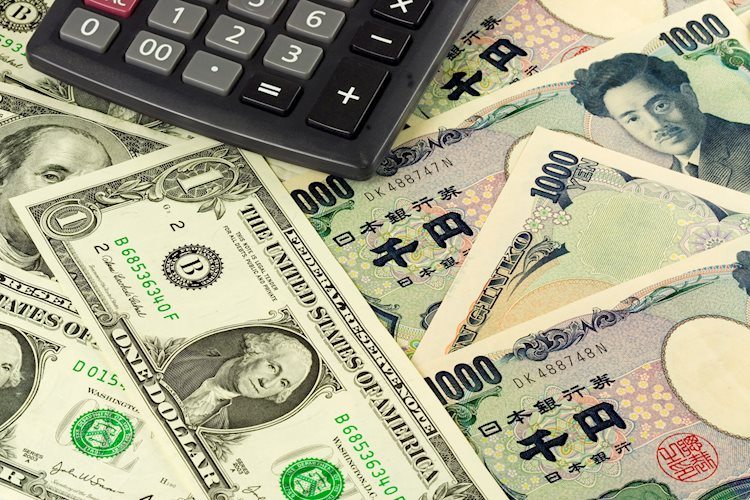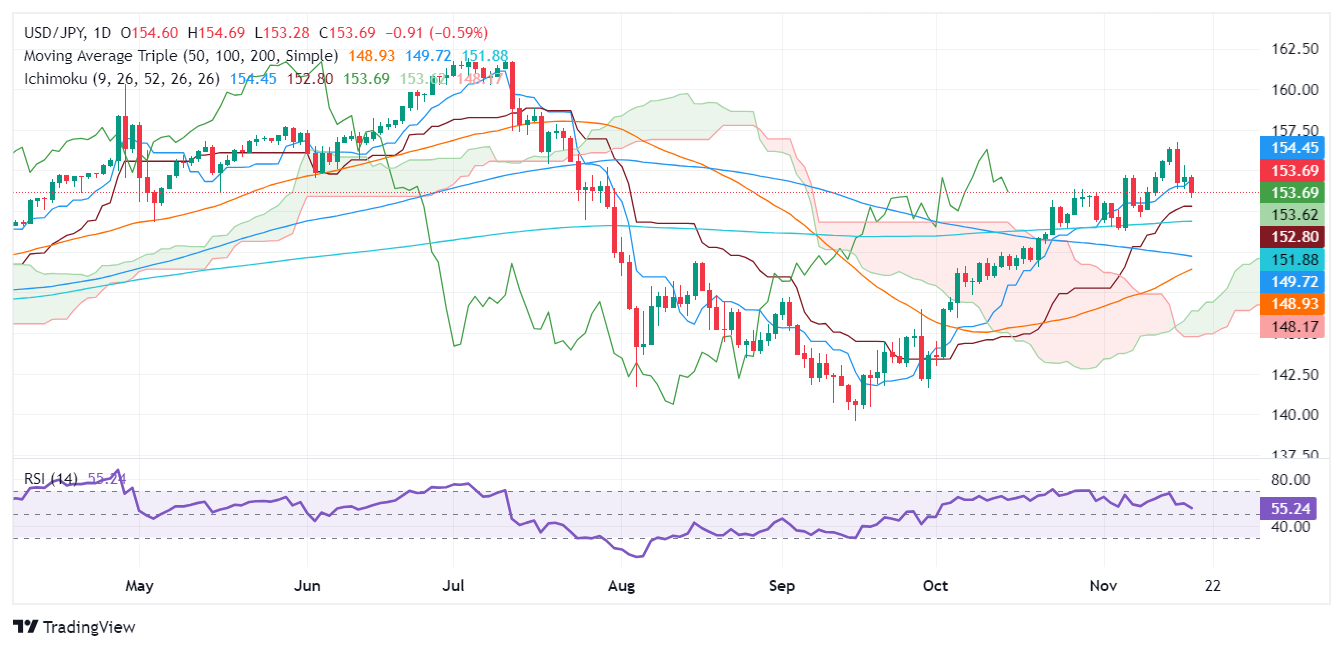- USD/JPY falls to a six-day low, breaking through key support levels amidst heightened risk aversion.
- Technical indicators suggest potential further declines, with next targets set at Kijun-sen and 200-day SMA at 151.88.
- Immediate resistance for USD/JPY is located at the 154.00 level, with significant upper resistance at the recent peak of 156.75.
The Japanese Yen registered solid gains versus the US Dollar in early trading on Tuesday, exchanging hands at 153.83 at the time of writing. Risk aversion sponsored by the escalation of the Ukraine-Russia conflict keeps traders seeking the safety of haven currencies, like the Yen and the Swiss Franc.
USD/JPY Price Forecast: Technical outlook
The USD/JPY cleared support at the November 7 high at 154.71, opening the door for further losses. The pair achieved a lower low, falling to a six-day bottom of 153.28, which could pave the way to testing the 200-day Simple Moving Average (SMA) at 151.88.
On its way to the 200-day SMA, the USD/JPY must clear the Kijun-sen at 152.80, followed by the 152.00 mark. If cleared up, next would be the 200-day SMA, followed by the 100-day SMA at 151.94.
On the other hand, the USD/JPY first resistance would be the 154.00 figure. Once cleared, the next resistance would be the November 15 peak at 156.75.
USD/JPY Price Chart – Daily
Japanese Yen FAQs
The Japanese Yen (JPY) is one of the world’s most traded currencies. Its value is broadly determined by the performance of the Japanese economy, but more specifically by the Bank of Japan’s policy, the differential between Japanese and US bond yields, or risk sentiment among traders, among other factors.
One of the Bank of Japan’s mandates is currency control, so its moves are key for the Yen. The BoJ has directly intervened in currency markets sometimes, generally to lower the value of the Yen, although it refrains from doing it often due to political concerns of its main trading partners. The BoJ ultra-loose monetary policy between 2013 and 2024 caused the Yen to depreciate against its main currency peers due to an increasing policy divergence between the Bank of Japan and other main central banks. More recently, the gradually unwinding of this ultra-loose policy has given some support to the Yen.
Over the last decade, the BoJ’s stance of sticking to ultra-loose monetary policy has led to a widening policy divergence with other central banks, particularly with the US Federal Reserve. This supported a widening of the differential between the 10-year US and Japanese bonds, which favored the US Dollar against the Japanese Yen. The BoJ decision in 2024 to gradually abandon the ultra-loose policy, coupled with interest-rate cuts in other major central banks, is narrowing this differential.
The Japanese Yen is often seen as a safe-haven investment. This means that in times of market stress, investors are more likely to put their money in the Japanese currency due to its supposed reliability and stability. Turbulent times are likely to strengthen the Yen’s value against other currencies seen as more risky to invest in.

